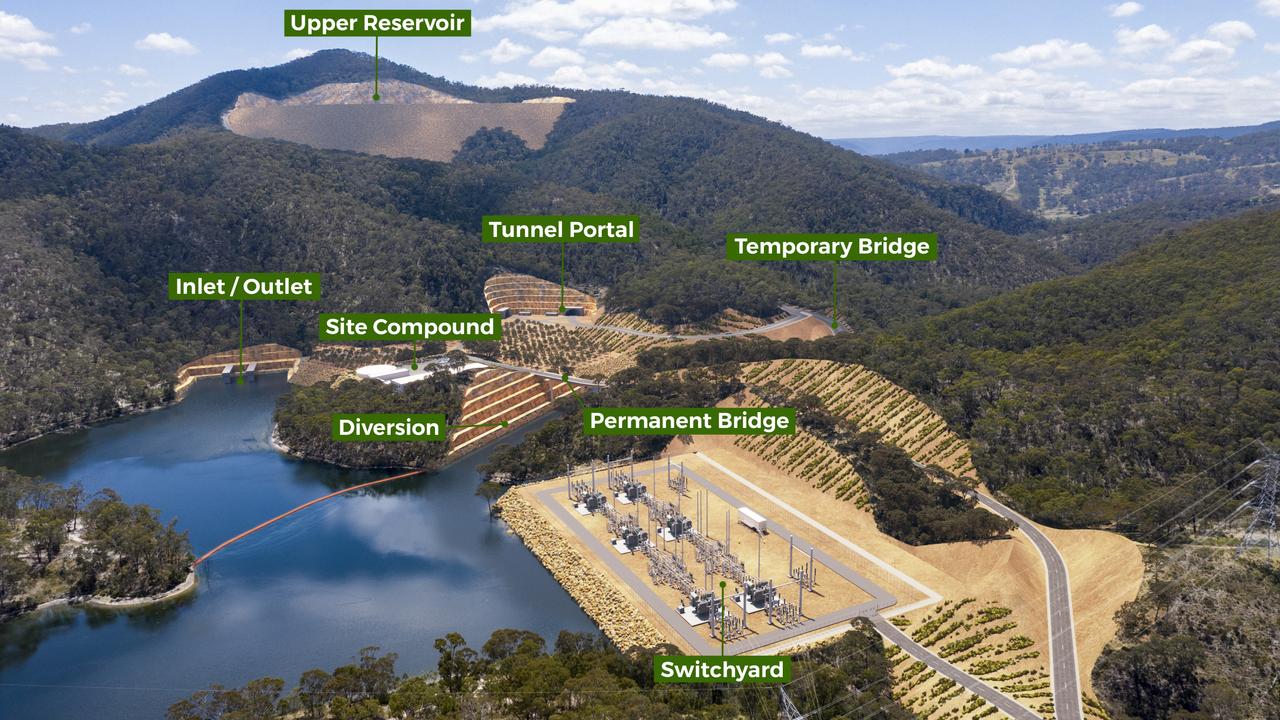EnergyAustralia targets $1bn plus pumped hydro project by 2030
The Lake Lyell project would be a major chunk of EnergyAustralia’s proposed $5bn outlay on new renewable energy and storage projects.
EnergyAustralia is targeting the completion of a new long-duration pumped hydro development in NSW by 2030, as it moves to accelerate $5bn worth of new renewable energy and storage developments.
Should the Lake Lyell Pumped Hydro Project proceed to final investment decision, which is seen as extremely likely, the 335MW project would provide energy for 150,000 homes for up to eight hours – a boost to Australia’s ailing energy transition plan, especially dispatchable storage capacity.
EnergyAustralia said it expected to complete environmental assessments by August 2024, and the project would be ready to be financially rubber stamped in 2025 for completion by the end of the decade.
EnergyAustralia portfolio development head Dan Nugent said the site on the outskirts of Lithgow was perfect for pumped hydro.
“You need enough head distance between the two reservoirs so they are not too far apart so you don’t have to build too much infrastructure between the two reservoirs,” Mr Nugent told The Australian. “You need to have water access and obviously access to the land. You need to have these ingredients and then you need somewhere located very close to transmission. We have this in this project.”
Transmission has been widely seen as the biggest bottleneck to Australia’s ambition of rapidly weaning off its coal dependency. About 10,000km of new lines must be built by 2050, but their development has been hampered by funding constraints and community opposition.
Australia has set an ambitious goal of having renewable energy generate more than 80 per cent of the country’s electricity by the end of the decade, but progress has proven stubbornly slow.
Dispatchable storage capacity is particularly behind the necessary pace, stoking concerns about potential blackouts and price spikes.

Coal has traditionally been the bedrock of the country’s energy grid, providing a constant source of electricity that has in recent times been supplemented by renewable energy.
But two-thirds of Australia’s coal power stations are expected to be retired by 2035, worrying the country’s energy industry which has said there was currently insufficient capacity to allow the traditional source of electricity to exit the system.
Australia’s energy industry said the country is moving aggressively to deploy large amounts of solar and wind generation but the country will be susceptible to periods when the sun is not shining or the wind is not blowing.
Batteries are one possible solution but Mr Nugent said they were prohibitively expensive if the duration was above four hours and had a lifespan of around 20 years, making pumped hydro the most feasible option.
But Australia has a limited number of suitable sites and projects can often experience unexpected issues, particularly around geology.
Australia’s largest proposed pumped hydro project is the prime example, with Snowy Hydro 2.0 now expected to cost $12bn and be ready in 2027 – years behind schedule.
The Lake Lyell Pumped Hydro Project would also be a substantial portion of EnergyAustralia’s clean energy development pipeline. The company earlier this year said it would spend $5bn to establish 3GW of renewable energy generation and storage assets by the end of the decade, a substantial increase on 850MW it currently has in development.
EnergyAustralia must move quickly as it is scheduled to close its Yallourn coal power station in 2028 after a deal with the Victorian government ends, leaving the company with just one additional coal generator.
EnergyAustralia did not reveal how much of the $3bn it intends to finance from its balance sheet.
The retailer has endured a difficult couple of years amid a global energy crisis that saw it post an annual loss of more than $1bn in 2022.
While the fortunes of Australia’s energy retailers have been significantly improved by recent increases to household and business bills – which allows companies to recoup heavy losses – EnergyAustralia posted a half-year loss earlier this month of more than $100m as a result of interest payments on debt.
More Coverage
Originally published as EnergyAustralia targets $1bn plus pumped hydro project by 2030





